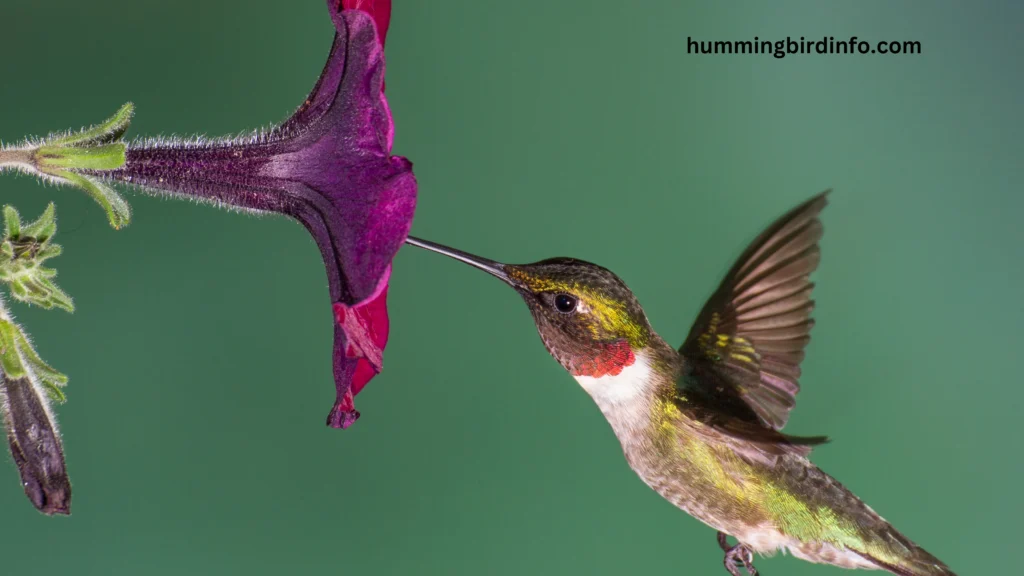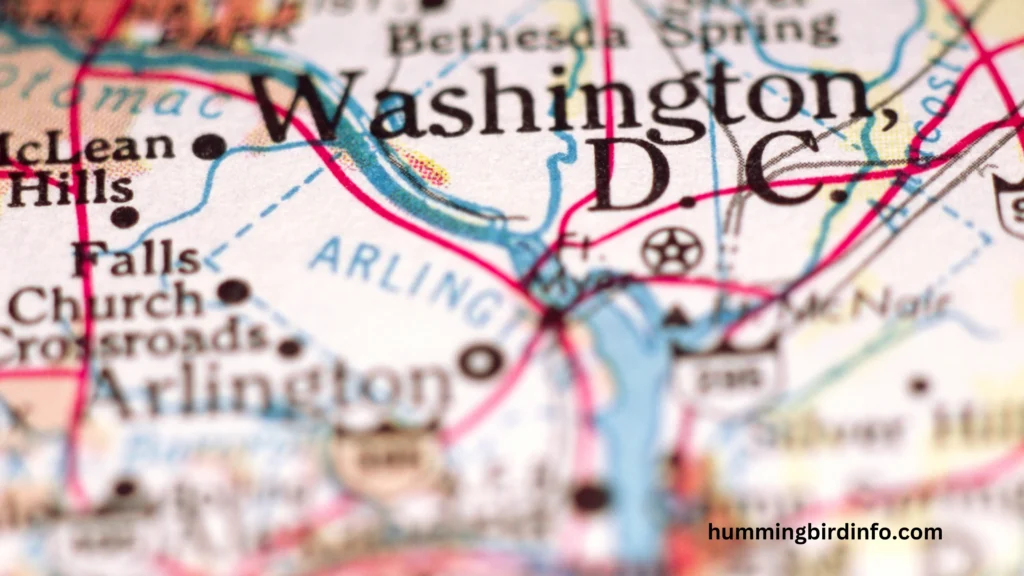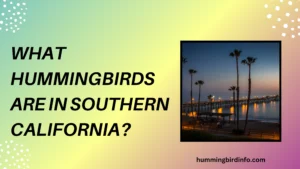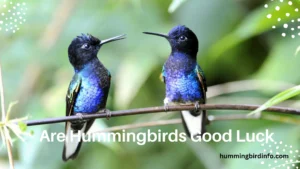From the fog-kissed coastlines of Big Sur to the arid deserts of Joshua Tree, California’s landscape bursts with color and contrast.
Amid this breathtaking scenery, hummingbirds—tiny, shimmering messengers of movement—bring a dash of magic to backyards, meadows, and mountain peaks alike. These remarkable birds, no heavier than a few paperclips, are not just eye-catching marvels; they’re essential contributors to the Golden State’s ecosystems.
California is a hummingbird hotspot, where the paths of migration, resident nesting, and rare vagrant visits all converge.
Whether you’re hiking in the Sierra Nevada, gardening in a Los Angeles suburb, or birdwatching along the Pacific Flyway, chances are, you’ve encountered one of these iridescent aviators darting from flower to flower or performing aerial stunts midair.
But how many species call California home—and what makes them so special?
In this article, we’ll explore the most common, rare, and seasonal hummingbird visitors that light up California skies. We’ll examine how the state’s unique geography, plant life, and climate support an impressive diversity of species.
From the year-round Anna’s Hummingbird to fleeting glimpses of the exotic Broad-billed, this guide will help you identify, appreciate, and maybe even attract these winged jewels to your own garden.
California’s hummingbirds are more than just beautiful—they’re a critical part of our environment, and understanding them deepens our connection to nature itself.
Contents
- 1 The Regular Residents and Common Visitors
- 1.1 Anna’s Hummingbird (Calypte anna): The Year-Round Urbanite
- 1.2 Allen’s Hummingbird (Selasphorus sasin): The Coastal Specialist
- 1.3 Rufous Hummingbird (Selasphorus rufus): The Fiery Migrant
- 1.4 Black-chinned Hummingbird (Archilochus alexandri): The Inland Visitor
- 1.5 Calliope Hummingbird (Selasphorus calliope): The Tiny Mountaineer
- 2 The Less Common and Occasional Visitors
- 2.1 Costa’s Hummingbird (Calypte costae): The Desert Jewel
- 2.2 Broad-billed Hummingbird (Cynanthus latirostris): The Southern Intruder
- 2.3 Violet-crowned Hummingbird (Amazilia violiceps): The Rare Elegance
- 2.4 White-eared Hummingbird (Hylocharis leucotis): The Mountain Vagrant
- 2.5 Buff-bellied Hummingbird (Amazilia yucatanensis): The Gulf Coast Stray
- 3 California’s Unique Hummingbird Ecology
- 4 Attracting and Observing Hummingbirds in California
- 5 Conclusion
- 6 FAQs
- 7 What is the most common hummingbird in California?
- 8 When do hummingbirds migrate through California?
- 9 Do all hummingbirds in California migrate?
- 10 How do I attract hummingbirds to my California garden?
- 11 Are there rare hummingbirds in California?
- 12 Why are hummingbirds important in California?
The Regular Residents and Common Visitors
Anna’s Hummingbird (Calypte anna): The Year-Round Urbanite
With a rose-pink crown and metallic green back, the male Anna’s Hummingbird is a familiar flash of color in California gardens. Females lack the full gorget but share the green plumage and show a white-tipped tail with some red spotting on the throat.

These birds are year-round residents, thriving in urban parks, coastal gardens, and oak woodlands. Their range stretches from San Diego to the Central Valley and even into cooler mountain regions.
Adaptable and resilient, Anna’s are often the first hummingbirds to nest, sometimes in January, and fiercely defend feeders. The males perform high-speed courtship dives, creating a loud buzz with their tail feathers to impress watching females.
Allen’s Hummingbird (Selasphorus sasin): The Coastal Specialist
Males shine with brilliant orange gorgets and coppery backs, while females show more green and a light rusty wash on the flanks and tail. This species can resemble the Rufous but has a more limited coastal range.
They breed along the coastal strip from Santa Barbara to San Francisco, favoring scrubland, gardens, and chaparral. Their migration loop takes them inland and southward, unlike most hummingbirds’ straight-line migrations.
Allen’s are spring and summer breeders, producing a rapid trilling sound with their wings during mating displays. They’re among the most common coastal breeders but rarely seen far inland.
Rufous Hummingbird (Selasphorus rufus): The Fiery Migrant
The male Rufous is unmistakable with its orange body and red-orange throat, while females have green backs with rusty sides and streaked throats. These birds are long-distance migrants, traveling thousands of miles from Mexico to Alaska.
In California, they appear during spring and fall migrations, especially in inland valleys, mountains, and forests. Their journeys are among the longest of any hummingbird relative to size.
Rufous Hummingbirds are known for their feisty nature. Even while migrating, they aggressively guard food sources and challenge larger birds at feeders.
Black-chinned Hummingbird (Archilochus alexandri): The Inland Visitor
These birds have a black throat with a purple shimmer in the right light, white collars, and glossy green backs. Females are more subdued, with grayish throats and white eye stripes.
Black-chinned Hummingbirds breed throughout California’s inland valleys, foothills, and riparian corridors. They’re especially prevalent in Northern California and the Central Valley in spring and summer.
After breeding, they migrate back to Mexico by late August. They’re highly adaptable and often use urban and semi-arid areas, especially where rivers or streams are nearby.
Calliope Hummingbird (Selasphorus calliope): The Tiny Mountaineer
This is North America’s smallest bird, and males boast magenta-striped throats that look like a crown. Females have streaked throats, rusty sides, and a compact size that sets them apart.
They breed in California’s mountain meadows, especially in the Sierra Nevada and Cascade ranges. These birds migrate thousands of miles, often using high-elevation stopovers in California.
Despite their size, Calliopes are bold and territorial, and they rely on wildflower blooms and alpine nectar sources during breeding and migration.
The Less Common and Occasional Visitors
Costa’s Hummingbird (Calypte costae): The Desert Jewel
Males wear a shimmering violet crown and gorget that curves into long “mustaches.” Females are more modest, with pale bellies and green backs.
They’re mostly found in southern California deserts, including the Mojave and Sonoran, where they thrive in cactus scrub and washes.
Costa’s Hummingbirds are early breeders, taking advantage of spring desert blooms. Males often perch on high stems and sing raspy, metallic notes.
Broad-billed Hummingbird (Cynanthus latirostris): The Southern Intruder
Males shine with a blue throat, green body, and a striking red bill tipped in black. Females have pale underparts and a partially reddish bill.
Though native to Mexico and Arizona, they occasionally stray into southern California, particularly in riparian desert oases.
Sightings are rare but increasing, especially in spring and summer. They prefer lush canyon vegetation, often near water.
Violet-crowned Hummingbird (Amazilia violiceps): The Rare Elegance
This species stands out with its blue-violet cap, white belly, and a red bill with black tip. It has a sleek green back and understated beauty.
A rare visitor from Mexico, it’s been recorded in southeastern California, typically in late summer or fall.
These sightings are exciting for birders and usually occur near sycamore groves or riparian woodlands, where they forage quietly.
White-eared Hummingbird (Hylocharis leucotis): The Mountain Vagrant
Easily identified by its white cheek stripe, blue throat, and emerald-green plumage, this hummingbird is a true rarity.
It appears sporadically in southern California mountains, often after storm-driven migration events.
Its preferred habitat includes pine-oak woodlands and shaded canyons, mostly in Mexico and Central America.
Buff-bellied Hummingbird (Amazilia yucatanensis): The Gulf Coast Stray
With a buff-colored belly, green head and back, and a reddish bill, this bird is a Gulf Coast native.
Occasionally, it strays west into California, typically during fall migration.
Look for it in coastal parks or southern California gardens, especially near tropical plants or feeders.
California’s Unique Hummingbird Ecology
California’s wildflowers—salvias, manzanitas, columbines, and monkeyflowers—are tightly linked to hummingbird pollination. Many blooms are tubular and red, perfectly suited to a hummingbird’s bill.
The state’s position along the Pacific Flyway makes it a key migratory stopover, especially for Rufous and Calliope Hummingbirds.
Diverse habitats—from deserts to rain-drenched forests—support species-specific niches. This helps reduce competition and increase overall diversity.
Climate change is reshaping migration patterns and flower bloom timing, which could impact hummingbird success in the coming decades.
Attracting and Observing Hummingbirds in California
Use a 1:4 sugar-water solution in clean feeders, avoiding dyes. Hang feeders in shady spots and clean them twice weekly in warm weather.
Plant California natives like fuchsia, monkeyflower, and hummingbird sage to offer continuous nectar throughout the seasons.

Add shallow birdbaths, fountains, or misters for hydration and preening. Hummingbirds love moving water.
Observe them during early mornings or late afternoons, especially during migration peaks. Local birding maps help pinpoint hotspots.
Join projects like eBird or Project FeederWatch to track sightings and support hummingbird conservation through science.
Conclusion
California offers a dazzling array of hummingbird species, from backyard regulars to mountain wanderers and rare visitors. Its ecosystems are finely tuned to support these nectar-loving pollinators.
They play a vital role in maintaining biodiversity, helping wildflowers, shrubs, and trees reproduce across the state.
We must nurture their presence through native gardening, habitat protection, and mindful feeder use. Each of us can make a difference.
Let’s marvel at their tenacity, beauty, and aerial mastery, and ensure California remains a sanctuary for hummingbirds for generations to come.
FAQs
What is the most common hummingbird in California?
The Anna’s Hummingbird is the most common and can be seen year-round, especially in urban gardens and coastal areas.
When do hummingbirds migrate through California?
Most species migrate north in spring (Feb–May) and south in late summer and fall (July–October).
Do all hummingbirds in California migrate?
No, Anna’s Hummingbirds are permanent residents, while others like Rufous and Calliope are migratory.
How do I attract hummingbirds to my California garden?
Plant native flowers, hang clean sugar-water feeders, and provide shallow water sources for drinking and bathing.
Are there rare hummingbirds in California?
Yes, species like the Broad-billed, Violet-crowned, and Buff-bellied Hummingbirds appear occasionally as rare visitors.
Why are hummingbirds important in California?
They are key pollinators for many native plants and contribute to the health and balance of local ecosystems.








